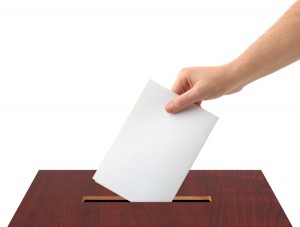 By Steve Brawner, © 2019 by Steve Brawner Communications, Inc.
By Steve Brawner, © 2019 by Steve Brawner Communications, Inc.
A presidential election has come and almost gone, and the two major party candidates have not campaigned in Arkansas or given the state much thought. President Trump is assured of winning here, so both candidates placed it in his column and forgot about it.
This is because of the Electoral College, which divides the country into red and blue states when all should be a shade of purple.
Here’s a plan to fix it.
As we’re reminded every four years, the president is elected not by the popular vote but by the Electoral College. Arkansas gets six of the 538 electors. It takes 270 to win.
Many states including Arkansas are reliably “red” (Republican), while others are “blue” (Democrat). Candidates focus on the few “purple” states that can swing either way.
Defenders say the Electoral College protects small states like Arkansas, but that’s not necessarily so. In almost all states, the winner of the popular vote wins all of its electors. Because of that system, a candidate can be elected by winning the largest 11 states narrowly and not even be on the ballot in the other 39.
Also because of this state-by-state winner-take-all system, the loser of the popular vote nationally can be elected president. This has happened in two of the last five elections: President Bush in 2000 and Trump in 2016.
Both happen to be Republicans, but the same system can favor Democrats in future elections. California and its 55 Electoral College votes are a lock for Democrats. So are New York’s 29 votes and Illinois’ 20. That’s 104 votes. Texas, long a red state, is becoming increasingly purple because of its changing demographics. If it turned blue, Democrats would win its 38 votes and begin every election cycle with 142 – more than half the total needed – from those four states.
The Electoral College too often doesn’t match the popular vote, allows candidates to focus on a few swing states, reduces the voice of voters in other states, and gives an artificial advantage to one party or another. The winner-take-all system makes it almost impossible for third parties to gain traction.
On the other hand, it has been a source of stability for more than 230 years. It ensures that states play a major role. It turns what could be a huge national mess into 50 more manageable ones.
Instead of scrapping it, we can improve it. Each state’s Electoral College votes should be multiplied by 10, giving Arkansas 60. Fifty of Arkansas’ would be divided among the candidates based on the percentage of votes they receive in the election. Ten bonus votes would go to the candidate who wins the state. A candidate would need 2% to qualify. For those who receive less, their percentage would be awarded to the winning candidate.
That means instead of Trump winning Arkansas’ six votes in 2016, he would have won 30 based on his 61% vote total, while Hillary Clinton would have won 17 and Libertarian Gary Johnson would have won one. Then Trump would have won 12 more by winning the state and by collecting the votes from the other third party candidates. The same process would happen in other states.
This reform would reduce but not eliminate the chance that the loser of the popular vote nationally would win the election. Because every state would have electoral votes up for grabs, campaigns would have reasons to focus on each one. It would give third parties more of a voice.
It also would increase the value of every vote, including yours. Here’s how.
Trump will certainly win all six of Arkansas’ electoral votes this year. If you’re voting for him, you’re just tossing another grain of sand onto the beach. Voting for Vice President Biden or anyone else won’t affect the outcome.
Under this proposal, every vote a candidate receives from an Arkansan – or a Californian or an Iowan – affects how the electoral votes are allotted. Your vote becomes something to be sought after, not placed in a column.
There would be no more red states or blue states. Instead, every state would become a shade of purple – some like Arkansas reddish purple, others bluish purple, but all unique and none ignored.
Steve Brawner is a syndicated columnist in Arkansas. Email him at brawnersteve@mac.com. Follow him on Twitter at @stevebrawner.
Agreed, Stephen, but I don’t see the need for the 10 bonus points for the leading candidate. Isn’t this something any state can do now as I notice that not all states are winner take all?
Whoa, Steve. Careful or you’re going to bring sanity back to this madness.
Like Georgia, I love the idea, but I don’t really get the logic behind not parsing out the full 60. Instead, if we feel the winner deserves a bonus at all, they could receive the sum of all other candidates fractional votes.
Why not just give each county in America one electoral vote, regardless of population? Suddenly, candidates must win over voters across America, and population density is irrelevant. The real problem is ballot integrity. The fraud, collusion and corruption is so obvious, but never confronted or punished in any meaningful way.
This would be a better system than we have now.